Flights to and from the offshore platforms and drilling rigs is by helicopter with flights lasting anywhere between 10 minutes and 2 hours 30 minutes depending on distance and weather. Flights conducted in the British North Sea typically use the Sikorsky S-92, AgustaWestland AW189 & AW139 and the Eurocopter EC225 Super Puma which is currently grounded after a series of suspected gearbox failures that have lead to fatal crashes, most recently in April. Keeping flights on time is tough enough during a North Sea winter without the added complication of having half the fleet grounded. Not being the first time the EC 225 has been grounded (resulting in reduced capacity leading to delays and headaches for logistics personal and offshore workers alike) the EC225 is falling out of favour with operators, with the more reliable S-92 being preferred.
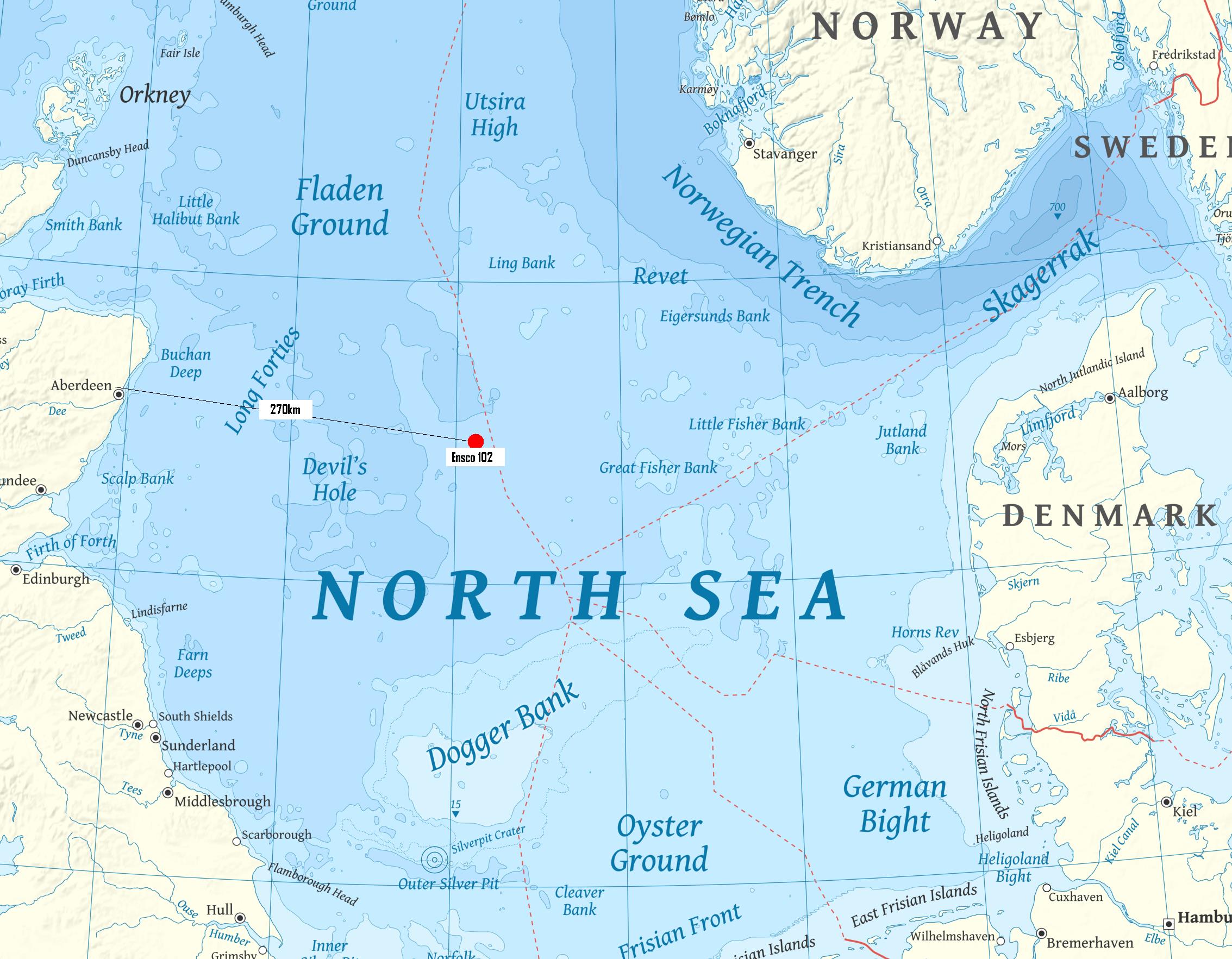
Although there is preserved to be added risk flying long distance in a helicopter over fridge North Sea waters, considering regular peoples commute to work, the novelty of taking a chopper to and from work still hasn’t worn off – it’s the best commute I’ll ever do! Incidentally, the Dyce airport, near the Scottish city of Aberdeen, that acts as the main base for flights for the North Sea oil industry is the world’s busiest civilian heliport.
No knifes, undeclared medication, liquids, phones (well some Rigs don’t allowed them), alcohol or even hung-over people are allowed offshore (you will be breath tested if they suspect that you are). These are all checked when you check in. It is also compulsory that you’ve attended a 2 day Basic Offshore Safety and Emergency Training (BOSET) course which involves, in part, helicopter evacuation while being upside down underwater before being allowed offshore. This is of course in case the helicopter has to ditch in the sea. After the safety briefing everyone don’s a dry suit and lifejacket(which includes spray hood, head light, artificial breathing lung and locator beacon), designed to increase your chances of survival in the frigid North Sea waters in the unlikely event your chopper goes down. Without the dry suit you may only last a matter of minutes in the water.
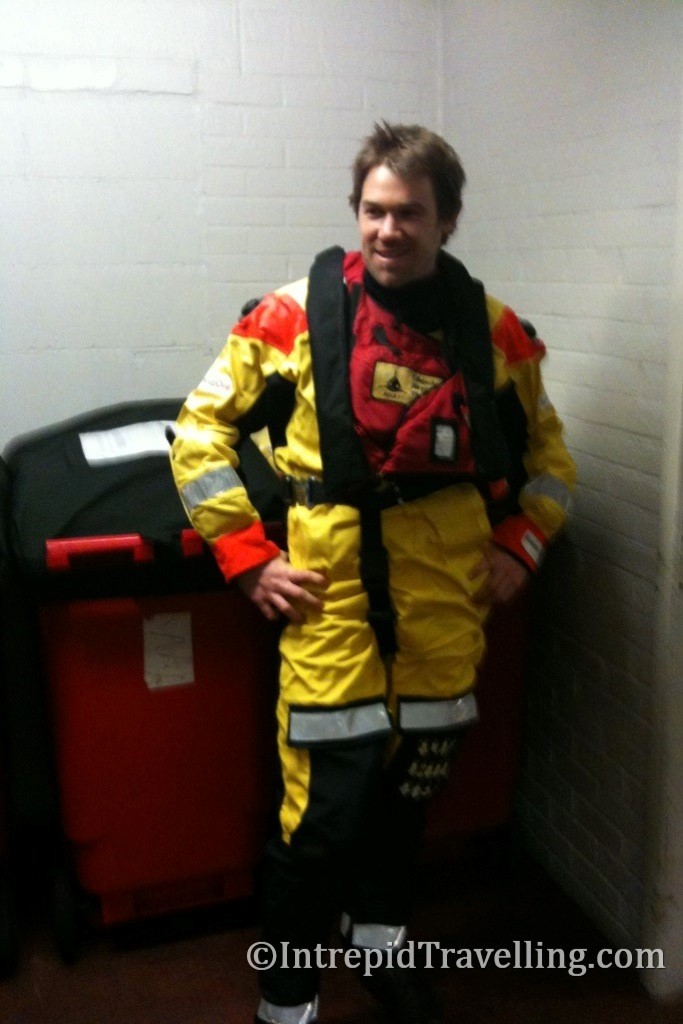
Most find the whole ‘palava’ of preparing for the flight a chore, but I rather enjoy the experience. I certainly never get sick of the moment we are lead out onto the tarmac, with the helicopter up to full RPM and we board and strap in. The noise, the chopper, the wind, it’s just a sensory overload that you have to love; then there’s the flight! When we taxi and lift off, departing like a plane would down the runway, it feels like I’d imagine the ‘Doc’ does from the movie ‘Back to the Future’ when the Delorean lifts off and hovers before accelerating away. Helicopter pilots sure do have the coolest job!
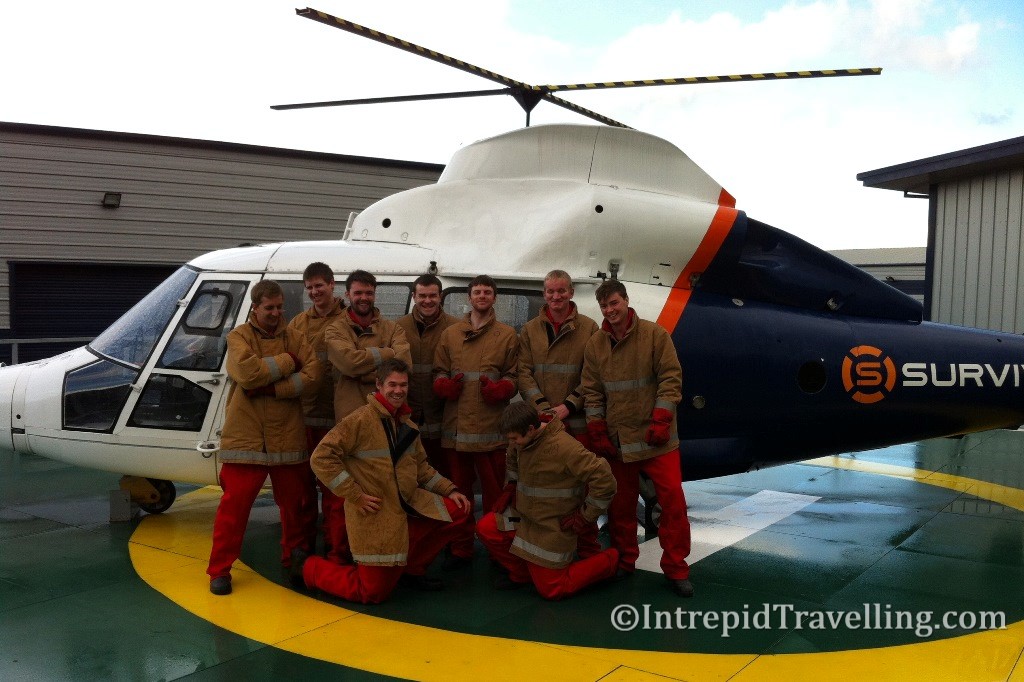
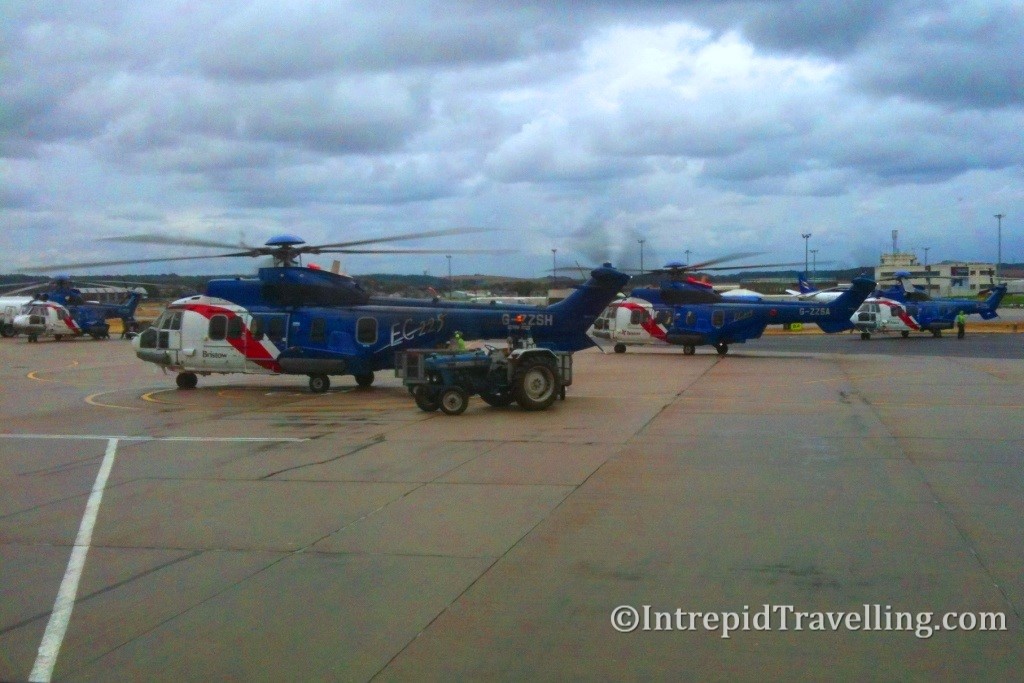
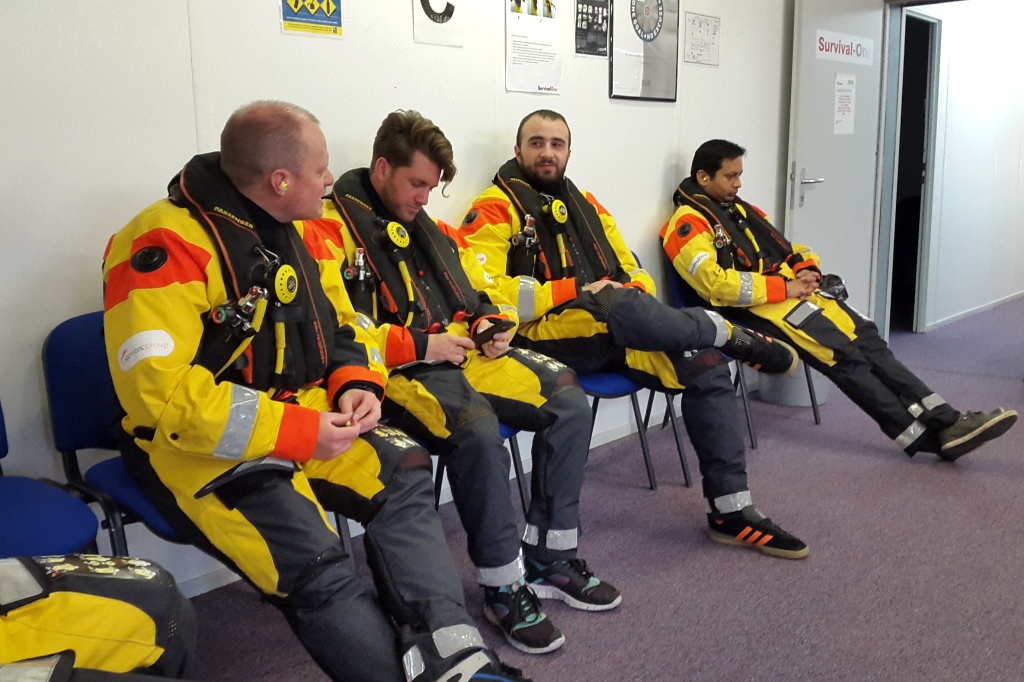
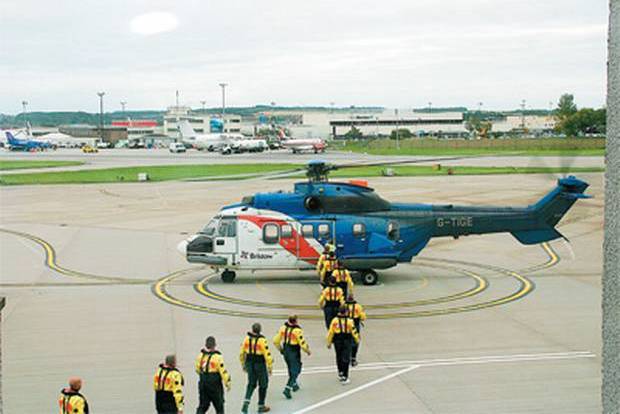
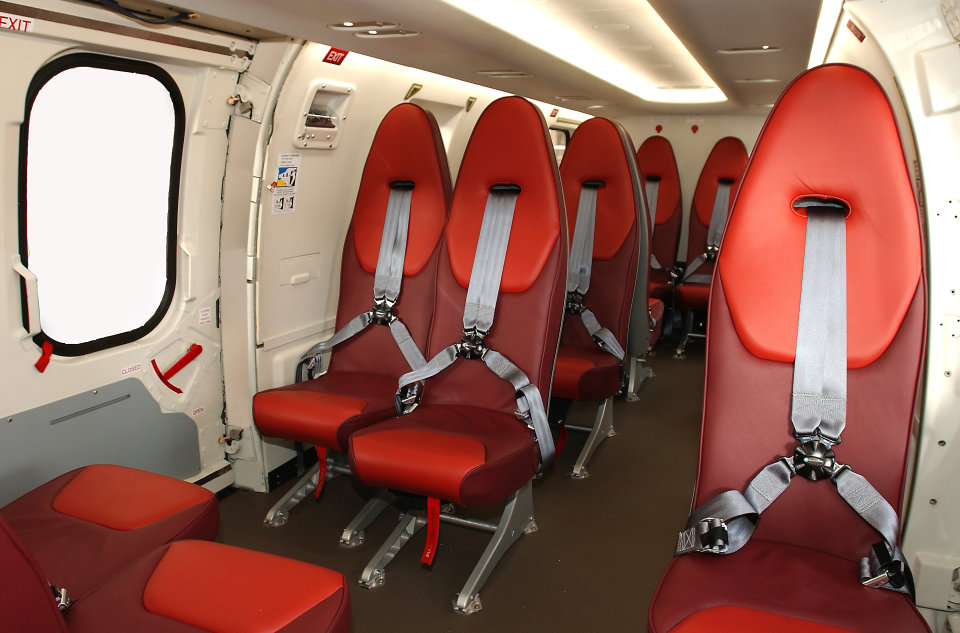
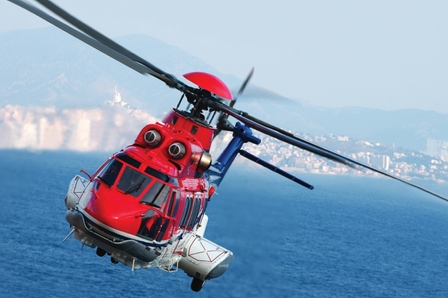
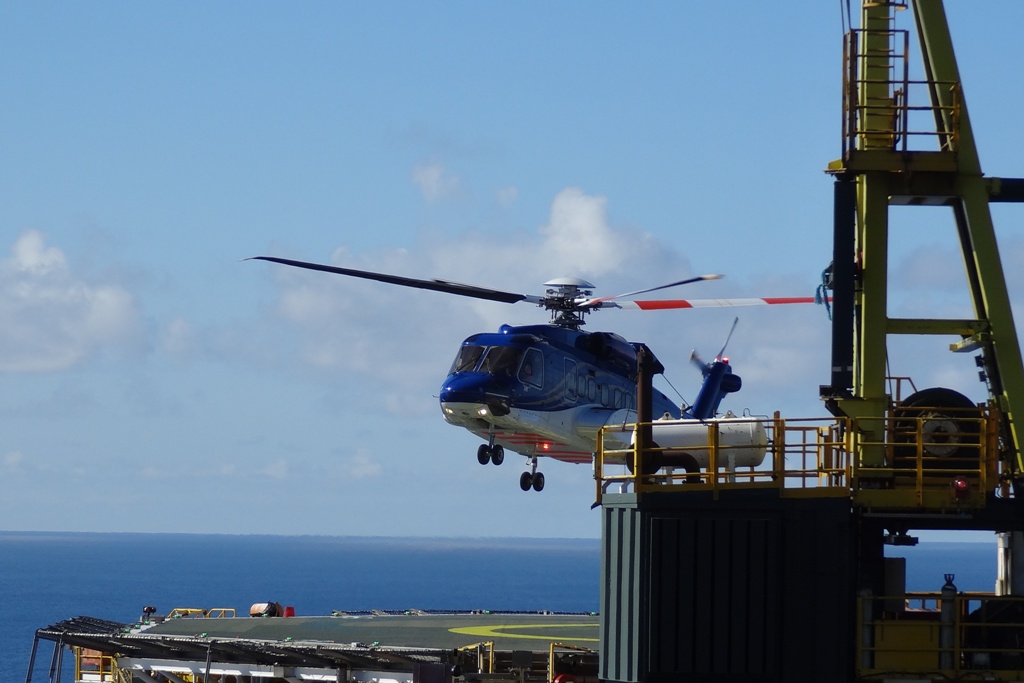
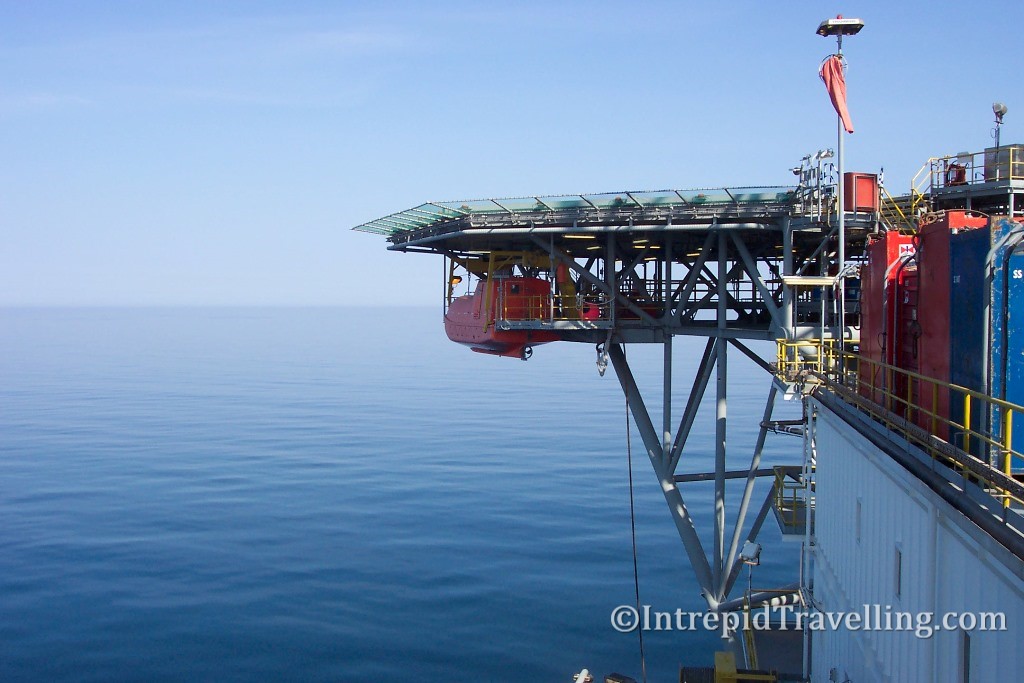

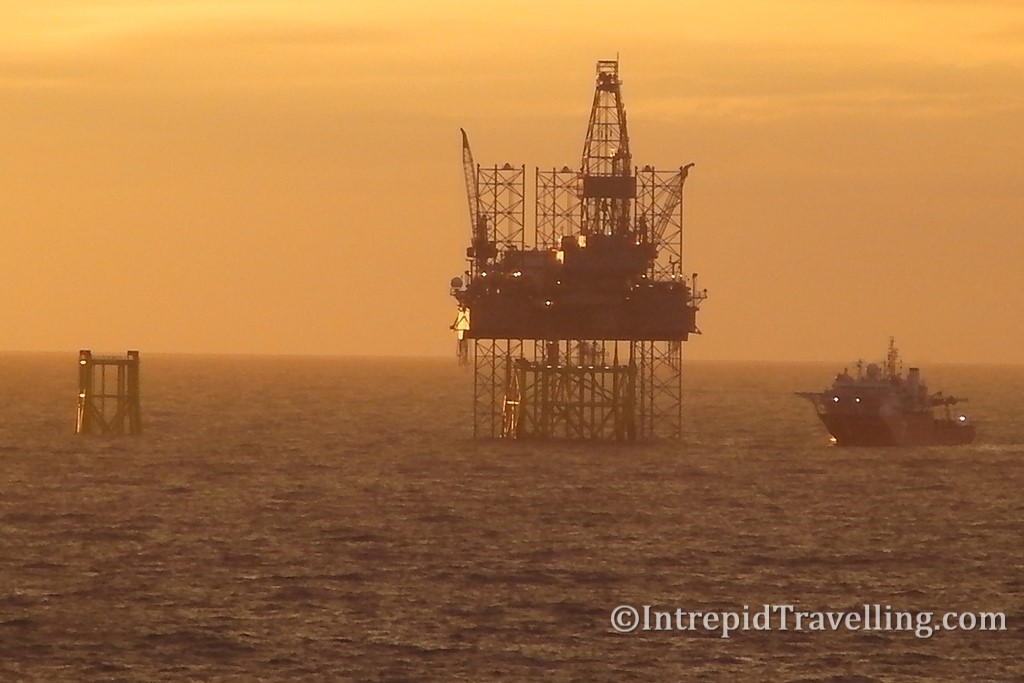
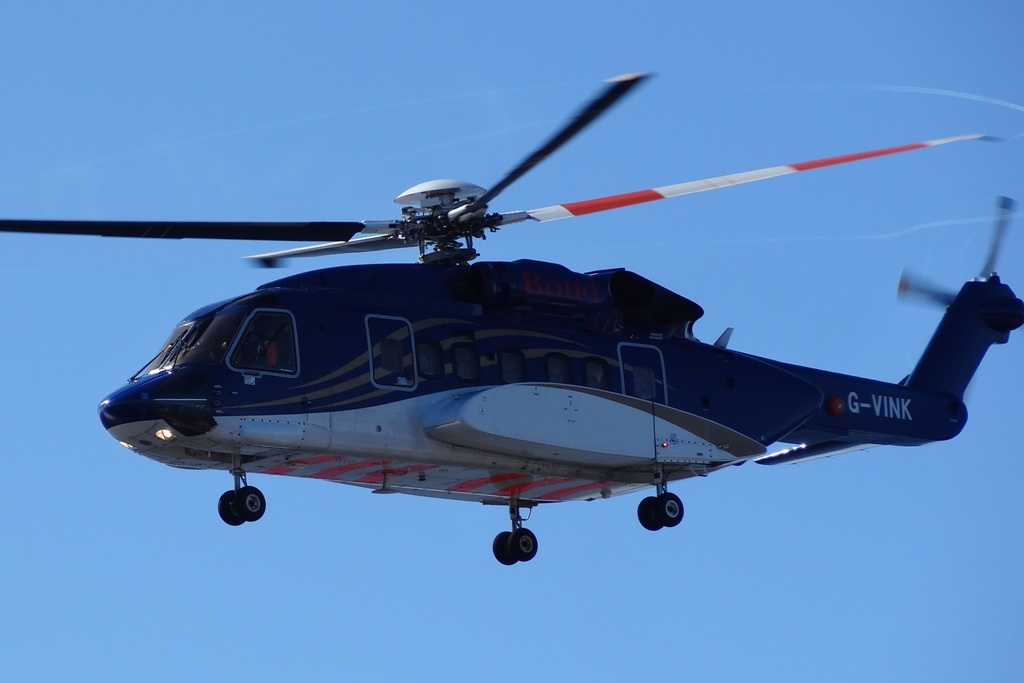
Once we’ve touched down and disembarked; the Rig induction and safety presentations begin in the Heli-Admin room. This commonly includes sitting through a video from the President of the company who owns the actual rig or platform, followed by a talk from the Rig Manager (OIM) and Oil Company Representative (Company man). At the conclusion of the induction your free to settle in and either head out to work or try catch some sleep before your first 12 hour night shift.




